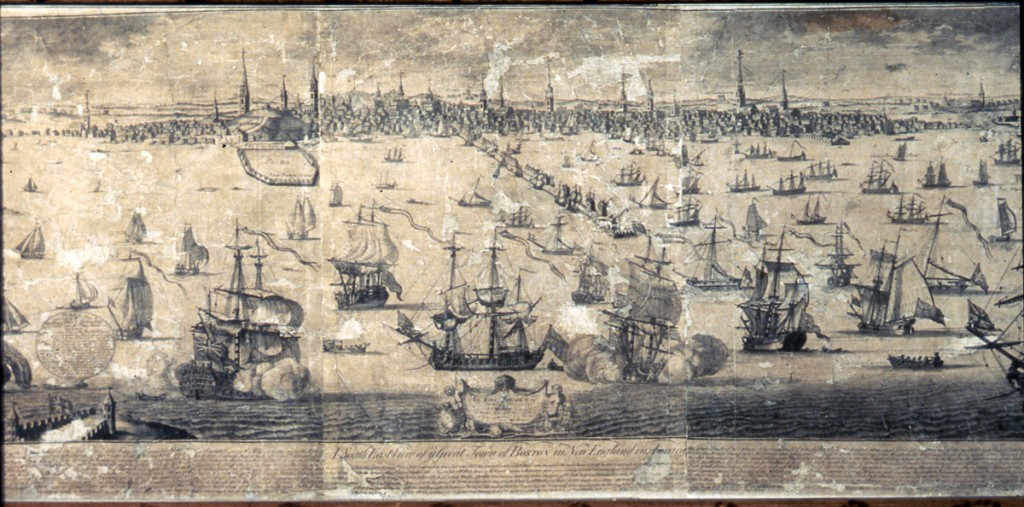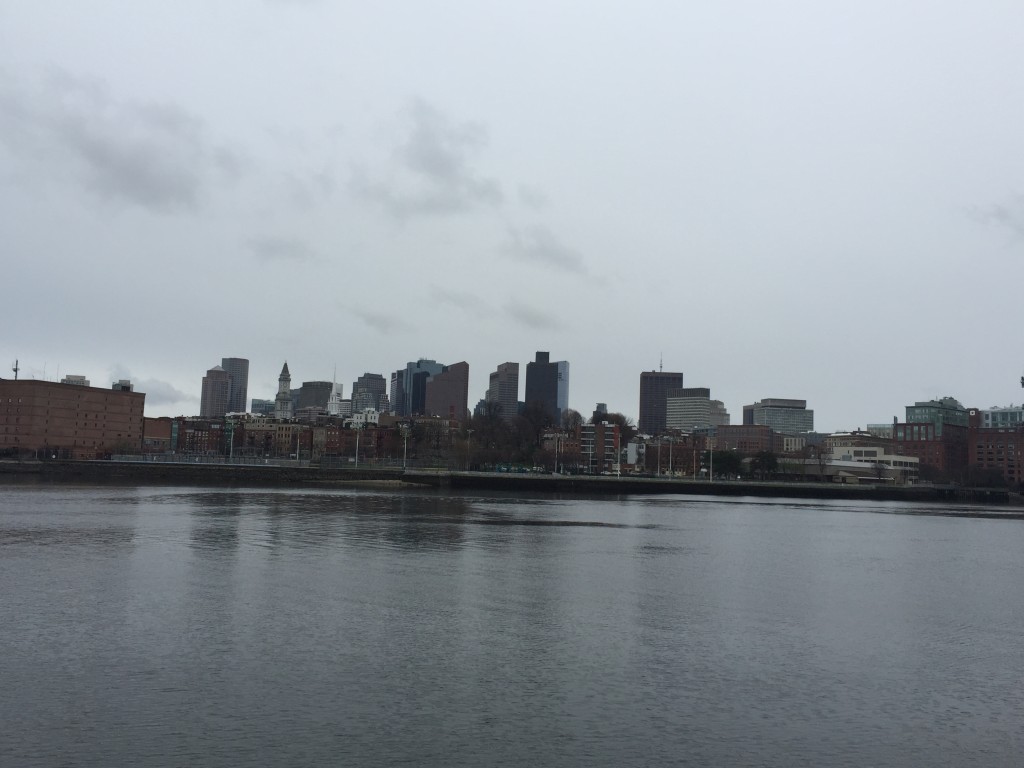Looking for the Colonial City
I have wanted to visit Boston ever since I was a child learning colonial American History. I was intrigued by the almost legendary stories of Patriots, boycotts, and a midnight ride. Plus my birthday fell on the same day as the iconic Boston Tea Party. After arriving at Winterthur and working my way through Furniture Block I became even more determined to see the city that captivates so many scholars. When spring break arrived I packed my car, cranked up the country music and hit the road bound for Boston.
John Harris I (Engraver), William Burgis (Draftsman), William Price (Publisher and seller).
A South East View of y\e Great Town of BOSTON in New England in America. 1743 Boston, Massachusetts. Engraving. The Winterthur Museum, Bequest of Henry Francis du Pont, 1959.2156 A.
I didn’t over plan my trip. I decided to just immerse myself once there. Sometimes seeing pictures of a place before you go can alter your experience of it and I didn’t want a guide book or a website spoiling my exploration of the city. I have always preferred to be surprised.
A local friend dropped me off at Boston Common, a public park downtown. She pointed out a good place for coffee and then left me to my own devices. I struck out towards the harbor under the assumption that historic buildings would likely be located near water. The first colonial building I stumbled upon was situated next to two busy streets. The building was well maintained with fresh paint and brightly gilded architectural ornaments. As I walked around looking for the building’s plaque I could hear the distinctive noise of the subway. When I reached the far corner of the building, which I had now identified as the Old State House, I was shocked to find an entrance to the subway. A metro stop was built under the Old State House!
The Old State House. Photo from http://www.thefreedomtrail.org
Surprised by this treatment of a national landmark, I hurried on still looking for my glimpse of the colonial city. No matter where I went I could not find a section of downtown that had preserved a colonial landscape. I found a single colonial building hidden here and there such as the Georgian Chipotle on School Street, but not a whole area. The next day I followed the Freedom Trail through the city in the hopes that it would lead me to the colonial oasis I was seeking. Alas, I still did not find my intact colonial city.
Above: the Old Corner Book Store. Photo by http://blog.chipotle.com. Below: Old North Church. Photo by the author.
I contemplated Boston’s erased colonial past while sipping tea on a swinging bench near the harbor. My thoughts kept returning to the cityscape of Annapolis and the abundance of colonial buildings in the city’s historic district. I realized that working in Annapolis had spoiled me architecturally. The colonial buildings of Annapolis survived, in part, due to the economic overshadowing of the city by Baltimore. This was not the case in Boston. Here the city kept growing. Some of the buildings had been preserved but others were lost or hidden as the city grew. As my feet dangled off the swing, I became aware of the fact that I had seen the colonial city of Boston, just not in the way I originally imagined. The streetscape has been altered but the streets themselves are the same crooked paths colonial Bostonians walked down. The Old State House sits on top of a T stop, not as a slight to Boston’s history, but as a complex negotiation between varied interests. The past is tangibly brought together with the present. Boston is not an oasis of colonial architecture, but rather a living breathing city that incorporates its past into its present and future.
Boston cityscape from the Navy Yard. Photo by the author.
By Alexandra Ward, WPAMC Class of 2017






Leave a Reply